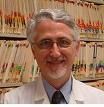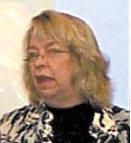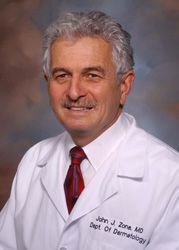Gluten History
History of Gluten Grain Intolerance and other important historical events and trends in health.
The purpose of this page is not only to highlight the gluten story, but also other lesser known historical medical events, trends and research that may play into the gluten syndrome and/or health in general. As societal and particularly children's health becomes a puzzlingly disturbing issue in educated, technologically focused nations, some of these previously abandoned or ignored ideas have been dusted off and reexamined.
Interwoven are factors that some researchers believe may underlie or contribute to the gluten syndrome:
- Cellular vs Germ theory - Germ theory favored drugs and processed food over health and wholeness.
- Processed Food - Wheat and milk resemble each other molecularly and are significantly processed.
- Toxins - Toxins are fingered as the "big guns" in the gluten syndrome.
- Fat trends - Fats handle toxins, affect gut cell membrane, help digest grains, and carry fat soluble vitamins.
- Sugar/Carb/Yeast debate - Sugars and yeasts contribute to gut dysfunction and immune cross reactions.
-
Ancient History - Early descriptions of digestive complaints
1700's BC - Digestive and related medical problems are mentioned in very ancient documents such as the book of Exodus 23:25, 26 (BC 1700)
"And ye shall serve the LORD your God, and he shall bless thy bread and thy water, and I will take sickness away from the midst (ie middle or can be 'bowels') of thee. There shall nothing cast their young, nor be barren, in thy land: the number of thy days I will fulfill."
100's - 250? AD approximately - Aretaeus the Cappadocian - Secular medical literature alludes to descriptions that specifically resemble gluten or possibly other food intolerances in writings from 100 AD, when a Greek physician, Archaeus the Cappadocian described "The Coeliac Affection". Francis Adams translated his description from Greek to English in 1856 for the Sydenham Society of England and translated the Greek term "koiliakos" to the more accurate European term "coeliac". "Celiac" is the less specific American version. They simply mean "belly or abdominal". (Medical Meanings by William S. Haubrich p. 43) Below is an Aretaeus quote from Digital Hippocrates: The Extant Works of Aretaeus the Cappadocian. (picture at left)
ON THE CŒLIAC AFFECTION.
THE stomach being the digestive organ, labors in digestion, when diarrhœa seizes the patient. Diarrhœa consists in the discharge of undigested food in a fluid state; if this does not proceed from a slight cause of only one or two days' duration; and if, in addition, the patient's general system is debilitated by atrophy of the body, the Cœliac disease of a chronic nature is formed, from atony of the heat which digests, and refrigeration of the stomach, when the food, indeed, is dissolved in the heat, but the heat does not digest it, nor convert it into its proper chyme, but leaves its work half finished, from inability to complete it; the food then being deprived of this operation, is changed to a state which is bad in color, smell, and consistency. Its color is white and without bile; it has an offensive smell, and is flatulent; it is liquid, and wants consistency from not being completely elaborated, and from no part of the digestive process having been properly done except the commencement.
Wherefore they have flatulence of the stomach, continued eructations, of a bad smell; but if these pass downwards, the bowels rumble, evacuations are flatulent, thick, fluid, or clayey, along with the phantasy, as if fluid were passing through them; heavy pain of the stomach now and then, as if from a puncture; the patient emaciated and atrophied, pale, feeble, incapable of performing any of his accustomed works. But if he attempts to walk, the limbs fail; the veins in the temples are prominent, for owing to wasting, the temples are hollow; but also over all the body the veins are enlarged, for not only does the disease not digest properly, but it does not even distribute that portion in which the digestion had commenced for the support of the body; it appears to me, therefore, to be an affection, not only of the digestion but also of the distribution.
But if the disease is on the increase, it carries back the matters from the general system to the belly, when there is wasting of the constitution; the patients are parched in the mouth, surface dry and devoid of sweat, and stomach sometimes as if burnt up with coal, and sometimes as if congealed with ice. Sometimes also, along with the last scybala, there flows bright, pure, unmixed blood, so as to make it appear that the mouth of a vein has been opened; for the acrid discharge corrodes the veins. It is a very protracted and intractable illness; for, even when it would seem to have ceased, it relapses again without any obvious cause and comes back upon even a slight mistake. Now, therefore, it returns periodically.
This illness is familiar to old persons and to women rather than to men. Children are subject to continued diarrhœa, from an ephemeral intemperance of food; but in their case, the disease is not seated in the cavity of the stomach. Summer engenders the disease more than any other of the seasons; autumn next; and the coldest season, winter, also, if the heat be almost extinguished. This affection, dysentery, and lientery, sometimes are engendered by a chronic disease. But, likewise, a copious draught of cold water has sometimes given rise to this disease.
300 AD - A Roman physician - described a diarrheal condition similar to celiac disease, for which he suggested plantain juice and fasting. Management of Celiac Disease - SV and MP Haas, JB Lippincott Co., Philadelphia (from Breaking the Vicious Cycle, Elaine Gottschall)
1745 - Prince Charles Young Pretender to the English throne is reported to have suffered ulcerative colitis and recovered on a milk-free diet. Cereals and Schizophrenia - data and hypothesis. Acta Psychiatry Scandinavia 42:125-152. (from Breaking the Vicious Cycle, Elaine Gottschall)
-
The 1800's - Cellular vs. Germ theory debate and Samuel Gee
The following paragraph is a quote thanks to Dr. Stefano Guandalini, MC, U of Chicago Celiac Disease Center IMPACT newsletter, summer 2007, Vol 7 Issue 3. Click for his detailed full article.
Matthew Baillie - In the early 19th century, Dr. Mathew Baillie probably unaware of Aretaeus, published his observations of a "diarrheal disease of adults causing malnutrition and characterized by the gas-distended abdomen. He even went on to suggest dietetic treatment, writing, "Some patients have appeared to derive considerable advantage from living almost entirely upon rice. His observations, however, went practically unnoticed.
Underlying concepts that fundamentally influence research today.
Germ theory vs Cellular theory - By the mid-1800 the invention of stronger microscopes afforded researchers a new view of microbiology. Two well-known French scientists, Louis Pasteur and Antoine Bechamp both saw the same images under their microscopes but interpreted what they saw differently. Their opposing ideas were a subject of debate in the French Medical Society for the rest of the century. They both passed away around the turn of the 20th century. The opposing camps of opinion held a "showdown" in which each presented proof. It is believed by some cellular theorists today that the cellular (or soil) theory proofs were bungled and mainstream science adopted Pasteur's germ theory as the basic interpretation of research until the present. However, predictions of the cellular theorists have come true and some research today appears to support some of these ideas.
Louis Pasteur 1822 - 1895, France - A well-known historical figure and French government scientist, Louis Pasteur believed the strange shapes he saw under his microscope were various "germs". A specific germ always appeared with a specific disease. He postulated that they were responsible for that specific disease, and should be eliminated. When they were "killed" the disease disappeared. Between 1850 and 1900 he developed immunizations or “biologicals” to combat these "germs", and introduced pasteurization of poor quality, infected milk in order to heat kill "germs" in the milk. A search for drugs and methods to destroy these "germs" has become the focus of research to this day.
Antoine Bechamp 1816 - 1908, France - Independent researchers including respected and capable Antonie Bechamp, a peer of Pasteur, disagreed with Pasteur’s interpretations. Bechamp and others believed the "microbes" morphed depending on their environment and the "job" they needed to perform. They believed deterioration and disease were created by poor conditions, such as toxins, inadequate nutrition, rest, fresh air, etc. The microbes morphed and appeared when needed in the form required to act as "janitors" or to perform other duties. They were blamed for the disease because they were always found on the scene. This is similar to blaming the fireman, policeman, or garbage collector for the fire because he is there to deal with some aspect of the fire. These microbes produced excretions of their own that often caused symptoms such as vomiting, diarrhea, etc., which caused waste products and toxins to ultimately be removed from the body. Therefore, "killing" the microbes does often stop symptoms. However this leaves the original cleanup work unfinished and if the underlying deficiency or toxin is allowed to advance, further deterioration may prompt microbes to return in worse forms later, to "scavage" a worse mess. Bechamp and others predicted that "germ theories" would send research on a wrong turn. Bechamp's final treatise "The Third Element of the Blood" explains and defends his position.
The following paragraph is a quote thanks to Dr. Stefano Guandalini, MC, U of Chicago Celiac Disease Center IMPACT newsletter, summer 2007, Vol 7 Issue 3. Click for his detailed full article
Samuel Gee, 1839 - 1911, London, England - and it was for the English doctor Samuel Gee, a leading authority in pediatric diseases, to take full credit for the modern description of celiac disease some 75 years later when he gave a lecture to medical students on the "celiac affection," the milestone description of this disorder in modern times.
Like Baillie, Gee sensed that "if the patient can be cured at all, it must be by means of diet." He added that "the allowance of farinaceous food must be small", and also described "a child who was fed upon a quart of the best Dutch mussels daily, throve wonderfully, but relapsed when the season for mussels was over; next season he could not be prevailed upon to take them." Thus he documents the improvement following the introduction of a gluten-free diet and the relapse after the reintroduction of gluten. His famous quote, "We must never forget that what the patient takes beyond his ability to digest does harm."
Samuel Gee's description of coeliac disease is as follows. "There is a kind of chronic indigestion which is met with in persons of all ages, yet is especially apt to affect children between one a five years old. Signs of the disease are yielded by the fæces; being loose, not formed, but not watery; bulkier than the food taken would seem to account for; pale in color, as if devoid of bile; yeasty, frothy, an appearance probably due to fermentation; stinking, stench often very great, the food having undergone putrefaction rather than concoction."
Quote Dr. Guandalini
As the decades passed, there was still no clue as to what could be causing celiac disease and no hint (in spite of autopsies frequently performed given the high mortality rate) of the damage to the intestinal mucosa. Yet some of the present-day findings, which we tend to consider as recent advances, were indeed well known long ago, including that celiac disease could be present without diarrhea, the protective role of breastfeeding in the development and severity of celiac disease, only recently documented, and the increased incidence in families, particularly twins.
-
1900's - 1950's Degeneration Studies, Carbs vs Protein (Gluten) Debate
Processed foods appear followed by widespread degeneration of societal health
Professionals who practiced between 1900 and 1930 observed such a sharp decline in public health and a rise in digestive disorders, heart conditions, and many others that some of them set out to find answers. They and also many missionaries and explorers were impressed by the contrast in health between peoples who still subsisted on centuries-old dietary practices dictated by their local environments, and the deteriorating health of Western civilizations. Modern societies had switched to “displacing foods of modern commerce”, mainly processed white flour and sugars, canned milk, meats and vegetables, and new hydrogenated vegetable oils such as the 1911 introduction of “Crisco.”
This research is not specifically gluten focused - but on the general effects of processed food in societies around the world.
Dr. Weston A Price DDS (1870-1948) - One careful researcher, a respected Cleveland dentist, Dr. Weston A. Price, traveled to many isolated cultures in the 1930s to observe these peoples, their diets, food preparation methods, and their overall health. He lined up villages to count cavities, made notes on general health, and took food and saliva samples back to his laboratory. He found 11 consistent dietary and cultural similarities between these very diverse isolated peoples around the world. He also found overall better health in the traditional cultures, and fine, straight teeth set in wide faces, with dental arches that had plenty of room for wisdom teeth, and very low incidences of cavities. He also observed a heartbreaking decline in overall health, susceptibility to illness, and “dental deformities”, meaning narrowed dental arches and crowded crooked teeth, other physical degradations, and many degenerative health conditions wherever these peoples came in contact with civilization and adopted modern foods. Other researchers of his era who performed similar studies had parallel findings. Brochure
Dr. Francis Pottenger MD (1901 - 1967) studied over 900 cats in the 1930s in Los Angeles, CA. His interest was to discover the effects of heat-processed foods vs. raw food on cats. Dr. Pottenger found that the health of the cats degenerated significantly with each generation they consumed processed food, particularly since cooking destroys taurine, an amino acid needed by cats (and humans but to a lesser degree) Dr. Price and Dr. Pottenger's final research conclusions were that "adoption of the "displacing foods of modern commerce," was disastrous for all groups studied" Simply put, "Processed food is NOT OK" Research today on the effects of processed wheat supports this conclusion. Note: This file contains 2 articles. Scroll to the top for the Vojdani article.
The carbohydrates vs gluten debate (sugar/starch vs protein)
As digestive disorders and many other health conditions increased, much excellent research was performed between 1900 and 1950. In the 1950's a debate among professionals arose over the role of carbs vs. protein (gluten) that exists to this day. Perhaps all sides are correct to some degree depending on the case. (Later, by the 1980s, "most carbohydrates and sugars" were fingered in overgrowth and treatment of candida/yeast issues.) Some researchers:
1. focused on permanent removal of certain grain proteins - Gluten Free Diet.
2. focused on temporary removal of specific carbohydrates (sugar, starch) - Specific Carbohydrate Diet
3. focused on temporary removal of all sugars and starches - Candida/Yeast Diets More candida diets
Carbohydrate research came first. Reference, Breaking the Vicious Cycle, Elaine Gottschall
Between 1900 and 1950 several researchers and their assistants handed off their work from one to the other as they passed on. They all focused on starches and sugars.
1908 - Drs. Emmett Holt Sr, Bellevue Hospital, and Christian Herter, Columbia University published "On Infantilism from Chronic Intestinal Infection". Remarkably they proposed that the nervous system was a main target of the disease and that "the most frequent cause of relapses is the attempt to encourage growth by the use of increased amounts of carbohydrates."
1921 - Drs. John Howland and Sydney V. Haas. Dr. Howland and Haas were Dr. Holt's younger assistants at the Vanderbilt clinic and were inspired to carry on his work. Dr. Howland presented his paper "Prolonged Intolerance to Carbohydrates" in 1921 to the American Pediatric Society. Again, he focused on the removal of carbohydrates.
Dr. Sidney Valentine Haas 1870 -1964 Dr. Haas agreed with his colleague Dr. Howland, but he searched for carbohydrates that agreed with his patients to increase their nutrition. He discovered bananas and banana flour worked well and he continued to develop a diet that included fruits and vegetables containing monosaccharides only (very simple sugar molecules that required no digestion).
Sidney Haas and his professional forebears all focused on problematic undigested starches and sugars in grains, starchy vegetables, refined sugars, and other complex carbohydrates with claims of 600 cures.
http://www.scdiet.org/7archives/scdceli1.html One year after Sidney Haas published his research on carb digestion, attention turned away from carbohydrates to focus on only the gluten (protein) in only certain grains. Soon after this debate arose, however, Herb and Elaine Gottschall appeared on the scene, Dr. Haas passed, and Elaine Gottschall continued Dr. Haas' work.
Herb and Elaine Gottschall, parents of 8-year-old Judy, found Dr. Haas, age 92 in New York. Judy was scheduled for colon removal but his recommendations saved the need for surgery and probably spared Judy's life. Herb sent Elaine back to school to discover why Dr. Haas' diet succeeded when all the other doctors failed. Elaine attended university for 19 years, became a biochemist, and continued Dr. Haas' work. She formulated the Specific Carbohydrate Diet, (SCD), in its present form, which removes not only all gluten grains, but all grains, and other foods which contain certain complex sugars. This or similar diets beyond the gluten-free diet are increasingly used today by patients with ulcerative colitis, Crohn's disease, autistic children, and other digestive and psychiatric disorders. She claims, as did Dr. Haas, that this diet can in some cases completely cure patients to a degree that they can reintroduce healthy forms of grains and starches. Elaine made it clear that this diet helps many but not all patients.
Attention turns from carbs to protein (gluten) - World War 2 - 1950's
Dr. Willem Dicke, 1905 - 1962, Holland a Dutch pediatrician, had previously noted that some sick children in his practice improved during World War 2 when gluten grains were unavailable, and deteriorated when these grains were again available.
Here is another quote from Dr. Guandalini - "Dicke had noticed that during bread shortages in the Netherlands caused by World War II, children with celiac disease improved. He also saw that when Allied planes dropped bread into the Netherlands, they quickly deteriorated. A few years later, working with others, he produced a series of seminal papers, documenting for the first time the role that gluten from wheat and rye plays in celiac disease.
This quote thanks to the ww.csaceliac.org website Dr. Willem Karel Dicke, a Dutch pediatrician, recognized in 1952 that the disease is caused by the ingestion of wheat proteins. He wrote his doctoral thesis on the subject for the University of Utrecht in 1950. By 1954, Dicke, Charlotte Anderson, and a number of their colleagues, working in Birmingham, England confirmed the treatment and described the histologic damage to the intestinal mucosa as being directly related to celiac disease.
Here is another quote from Dr. Guandalini- The next major breakthrough came in the mid-50s when Margot Shiner described a new jejunal biopsy apparatus with which she successfully reached and biopsied the distal duodenum. This – and the development of the less cumbersome capsule developed shortly after by the American Lieutenant Colonel Crosby -- finally allowed doctors to link the disease with a specific, recognizable pattern of damage to the proximal small intestinal mucosa."
NOTE: The carb vs protein (gluten) debate is important! It is worth the time to read both sides and apply the information to one's own situation. Perhaps carbs and/or gluten are both problems depending on the case. Some patients begin with the Gluten-Free Diet and later go further to the stricter Specific Carbohydrate Diet or a Candida/Yeast Diet or other similar carbohydrate-based diets. Here are papers from both sides to compare:
The carbohydrate perspective by Elaine Gottschall
The protein (gluten) perspective by Dr. Stephano Guandalini
(By the 1970's another even stricter diet appeared, the Candida/Yeast Diet and versions of it. )
The candida/yeast perspective - Dr. William Crook and Bee Wilder's Candida support program
Coming - More circa 1930's research Much fascinating research was performed between 1900 and 1950 which has been ignored or forgotten as corporate and industrial interests powered the direction of science, medicine, and politics. This list does not include a number of these scientists passed over by mainstream medical history. They may have important contributions to a better understanding of our current health crisis. As time permits, short biographies of these researchers will be added to this page.
Later 1950s - Gluten-focused, villi damage celiac is assumed "rare", and nearly forgotten
The gluten-centered perspective led to a 1950s diagnostic criteria for "celiac" disease, based on an autoimmune reaction limited to gluten-based grains. Symptoms included diarrhea, short stature, failure to thrive, frothy pale stools, and general digestive troubles. At first, the diagnosis was symptom-based, but soon endoscopes and blood tests appeared and the diagnosis was further limited to only positive antibodies, villi damage, and villi regrowth on the gluten-free diet. Sometimes a gluten challenge was required to document regression and villi regrowth a second time for the final diagnosis.
Unfortunately, only a few of the many patients ill with digestive complaints fit the exceedingly narrow celiac criteria. Attention turned away from carbohydrates AND gluten for several decades. Paradoxically, digestive illness continued to rise, but "Celiac disease" was thought to be extremely rare in the United States. Medical students received minimal training (20 minutes) and were told they would probably never see a case in their practice. Therefore US doctors knew of celiac disease but rarely considered or tested for it. Patients waited an average of 11 years for diagnosis if they were ever diagnosed at all. Many of these unfortunate sufferers were labeled with a catch-all term, "Irritable Bowel Syndrome", and advised to manage their particular symptoms with antidiarrheals, antacids, and constipation aids. Nondigestive ailments such as headaches, seizures, autoimmunity, inflammation, or nutritional deficiencies were rarely connected at all. It was nearly the year 2000 before this situation changed in the US.
-
1960's - 2000 Industrialized fast food vs. Back to the Earth movement
Chemical and toxin use in agriculture and processed food - After World War 2 and subsequent wars, leftover chemical warfare products were put to use as agricultural insecticides. Chemicals and thousands of artificial substances in agriculture, the food supply, and the environment increased dramatically over the years. NOW they are fingered as relevant by segments of the gluten syndrome and autism communities and other health groups. Many researchers insist that while genes predispose and may explain the occasional case of gluten reactivity in previous centuries, perhaps still in combination with toxic exposures, TOXINS themselves are the "big guns" today. Toxins are now thought by many researchers to degrade the gut wall and expose a much higher percentage of the general population to an immune response to gluten.
1960s - Hippies demanded organics and unprocessed grains such as whole wheat during the "Back to the Earth" movement. Although the hippies realized food processing robbed them of nutrition they did not consider that their whole wheat had been harvested dry with modern equipment. It was not exposed to the elements as in the old days when shocks stayed out in the weather and were built with a "cap" to "sweat" the grains. Thus the exposure to moisture and subsequent drying in the sun neutralized phytotoxins in the brain and released enzymes inside the kernel that assist the body in the digestion of the grain. The whole grain movement of the 1960s milled unsoaked grain with phytotoxins still in the bran, and then due to the 1970s low-fat trend, reduced the fats eaten with it that aid grain digestion. Furthermore, hydrogenated margarine was often substituted for natural traditional butter. See Wheaty Indiscretions WAPF
1970s - Low Fat-No Fat-Vegetable oils - Natural saturated animal and tropical fats were demonized, (butter animal fat, coconut oil, and palm oil) and replaced with processed liquid and hydrogenated vegetable oils containing trans fats. These were claimed more "heart healthy" even though huge research projects such as the Framing Ham Heart Study showed otherwise. Some patients today trace their digestive problems back to when they jumped on the whole wheat, low-fat bandwagon in the early '70s. Interestingly, after the low-fat trend became established, the fat-soluble Vitamin E awareness fad began. See The Oiling of America
1970s - European doctors caught on to protein/gluten-based celiac disease in the 1970s and diagnosis rates climbed accordingly. While an American patient waited an average of 11 years for a celiac diagnosis if they were fortunate enough to be diagnosed at all, eventually a European patient was identified in only a few weeks.
The 1980s - Interest in sugar, carbohydrates, and yeast/candida-related illnesses reappeared in the US with "Sugar Blues" 1975, by William Dufty, and "The Yeast Connection", 1986, by William G. Crook.
1990s - The Four Food Groups were replaced by the Food Pyramid with grains on the go replaced in 1992 by the Food Pyramid with o grains on the bottom and fats at the top.
1990s - Early 1990s An expanded vaccination schedule for infants and children was put in place and enlarged in the ensuing years. A debate arose thereafter over Thimerosal (a mercury-based disinfectant) and other additives as well as the safety of some of the vaccinations themselves, as the rates of autism in children rose dramatically.
1990s - Cell phone coverage and other forms of electrosmog such as wireless internet, cordless phones, microwaves, and other exposures grew steadily throughout the 1990s and until present until most of the United States is now exposed to cell phone radiation. Research on the health benefits/dangers of cell phone and electrosmog exposure brings deeply troubling issues to light including concerns that the gut and blood-brain barriers may be altered by such radiation. This is of direct concern to the gluten syndrome and allergy/intolerant communities as disturbed tight junctions between the gut and other barrier cells are a major instigator of gluten reactivities.
1992's - The US was challenged in the early 1990s and forced to hear the "celiac story" in 2003 - Dr. Alesio Fasano, a young gastroenterologist from Naples, Italy, joined the University of Maryland research team in the early 1990s. He ran a routine search on the University of Maryland hospital computer for the number of celiacs diagnosed in the past 10 years. To his astonishment, the search returned one case. His reaction was, “Where are the American Celiacs?” He refused to be deterred by colleagues who insisted "It's not here in America." Alesio's courageous insistence that many Americans do have "celiac disease", backed by prompt diagnosis of patients under his care led to a 5-year study to establish prevalence rates in the US. The project included approximately 15,000 patients across 32 states. At the end of the study, Dr. Fasano was right. New figures showed that 1 in 133 Americans sampled from the healthy population, and 1 in 56 in the symptomatic population had villi-damaged celiac disease. They were 97% undiagnosed! The study was published in the Archives of Internal Medicine, in Feb 2003. Subsequent studies support 1: 100 in the healthy population.
1996 - New organisms in the food supply - Genetically modified crops were first grown in the United States in 1996. These new foods entered the world market unlabeled. They attracted attention more quickly in the UK and Europe and were labeled "Frankenfoods" in a storm of protest, but it was nearly 7 years before the US began to notice their presence.
1996 - Mario Hadjivassiliou - published an article on gluten and neurology Does cryptic gluten sensitivity play a part in neurological illness? Feb 1996
-
2000 - Degeneration, toxins, GMO's, gluten awareness vs organic trends
By the turn of the century, autoimmunity, degenerative disease, obesity, autism, ADD, diabetes, cancer digestive and mental illnesses were obviously on the rise. Children's health was an increasing concern. In response, the movement back to sustainable organic agriculture and Weston Price style traditional dietary habits began to gain ground rapidly. Local organic sources became more easily available and trendy.
2000 - Dr. Ken Fine opened Enterolab in Dallas Texas to research the gluten syndrome and make available to the public a home stool test by mail order.
2003 - Seeds of Deception was published, a call to arms regarding genetically modified crops. Jeffrey Smith, an employee at a genetics lab, spawned a wave of awareness and unease regarding GMOs and diet in general.
2003 - Prevalence of Celiac Disease in At-Risk and Not-At-Risk Groups in the United States was published in the Archives of Internal Medicine, Vol 163, February 10, 2003, 286-292 Relief was finally on the way for many celiac sufferers in the United States, but as is often the case the story was not as simple as it first appeared. Confusion and disjointed dynamics often occurred as the media, medical community, and the general public were made aware of this disease simultaneously. Medical practitioners in many disciplines were forced to scramble for new information as patients approached them for tests and treatment. Understandably many doctors brushed off their patient's requests to be tested. Indeed many patients who were sure they would turn up positive tests, in fact, did not, even patients who already suspected gluten was a problem. Laboratories that rarely ran celiac screens were deluged with sensitive tests that their operators were not experienced enough to run properly or interpret accurately. Much frustrating effort was expended by celiac specialists to educate their professional colleagues. Often they were initially ignored or worse, deprecated, by their peers. Doctors who responded and learned quickly were appreciatively dubbed by some support groups as "heads-up doctors". All of our celiac and gluten syndrome specialists have worked very hard and taken a beating to bring this syndrome to our attention.
2004 - A drug for the gluten syndrome? - Dr. Fasano and a team of scientists formed Alba Therapeutics to develop a genetically modified (recombinant) drug that is currently in testing to begin to treat the gluten syndrome. The drug works by manipulating a chemical they recently discovered and named "Zonulin". Zonulin controls the opening and closing of "gateways" in the gut wall which allow certain items to pass across the gut wall into the body. In the presence of inflammation, high levels of zonulin change may cause these "gateways" to malfunction and allow molecules such as undigested gluten to slip into places they are not intended to be and then the immune system reacts. The drug is currently being tested on real celiac patients, but it is not ready for market at this time. It is not intended to replace the gluten-free diet but for occasional use in unusual situations. (Feb 2009)
Why so many negative testers who respond to the diet? Meanwhile, to complicate matters, as word of the new research spread among newly diagnosed celiac patients, some family members had no symptoms at all but were tested anyway since the disease often has a genetic component. In many cases, they tested positive (antibodies and damaged villi) with no hint of symptoms, and were labeled "silent celiacs". In other cases, symptomatic family members and friends realized they also had many symptoms of celiac disease. However many of them tested negatively for the antibodies or villi damage required for formal diagnosis. Some of them tried the diet and many discovered that indeed they improved. Others, confused by their negative tests, gave up the gluten-free diet even though they felt better, or never tried the diet at all. Still others went gluten-free sometimes with dramatic improvement, but intentionally went back to gluten for a period of weeks or months in order to be tested. They did this to obtain their “magic celiac diagnosis”, and to socially confirm their need for this “funny diet”. Unfortunately, those patients often found the “gluten challenge” very very miserable and some have been damaged by it. Their bodies seemed much more sensitized to the effects of gluten the second time around. Unfortunately, many of these non celiac gluten syndrome patients who had already discovered they should avoid gluten, received negative tests (antibody and biopsy), despite misery during and even after their gluten challenge. Many were misled back to their old problems on a gluten diet. Others listened to their body's clear messages and went gluten-free permanently anyway.
2005 - Nonceliac gluten syndrome patients appear to comprise a majority of the gluten-reactive community. Unfortunately, comparatively little research has been performed on this puzzling group of patients. For decades ALL research on gluten intolerance was performed on biopsy-diagnosed celiacs. Many doctors recognized that their negative testing patients improved on a gluten-free diet, but they hesitated or refused to recommend a strict gluten-free diet with no research or diagnostic criteria to back up their diagnosis. This left the majority of gluten-intolerant patients in a medical “No Man’s Land”, forced to make their own decisions as best they could determine. Often this undiagnosed state led to poor compliance and further deterioration of health. Concern arose that more patients were misled by the celiac story as understood at the time than those who had villi damage and received a celiac diagnosis.
2005 - The continuing carbohydrate story - Elaine Gottschall peacefully passed away on September 5, 2005, at age 84. Elaine is the courageous mom who went back to college at age 47 at her husband's urging after Dr. Sidney Haas' specific carbohydrate diet healed their 8-year-old daughter Judy. Before her death, she finally was afforded the recognition she well earned for her help to many many persons suffering from a range of disorders including autism, Crohn's disease, ulcerative colitis, and many many others. The Specific Carbohydrate Diet is gluten-free but goes beyond and focuses instead on the types of sugars and carbohydrates in the diet. The SCD Diet is used extensively in biomedical autism circles. As with most other diets, it clearly helps many but not all patients. Personal tribute Obituary
2006 - New labeling laws aid patients with allergies and intolerances. - new labeling laws went into effect in January 2006. They required the 8 top US allergens to be clearly labeled on all food items. This list included wheat, soy, milk, eggs, fish, shellfish, tree nuts, and peanuts. This litigation helped gluten-intolerant patients partly but not completely since barley, rye, and oats were not included in the list. Further amendments are still in progress and the definition of "gluten-free" was still undetermined. The general skeptical public was forced to take gluten more seriously when they saw gluten and wheat labeled on their food products.
Dec 2006 - New York City banned trans fats in unpackaged food. A major victory for Mary Enig and their peers, who worked to document and raise awareness of transfat dangers since the 1960s. (The Rise and Fall of Crisco)
"Interesterification" quickly replaced transfats, unlabeled. Some researchers have expressed concern that interesterified fats do not contain transfats, but do still contain an artificially changed molecule that the body has never seen. These fats are found in vegetable oils that are processed into a partially hardened, soft-spread state, ie no longer in their liquid state. Some researchers recommend that butter, virgin coconut or palm oil, or naturally raised animal fat be used in place of vegetable oils and soft tub fats or margarine. Articles that explain interesterified fats are sometimes noncommittal as to their effects.
Transfats are not required to be labeled if their weight per serving is under .5 grams. Therefore it is easier to check ingredients by looking for hydrogenated or partially hydrogenated vegetable oils. Interesterified fats are still hydrogenated but do not contain transfats. Almost all baked goods contain processed hardened or partially hardened vegetable oils.
2008 - Statistically about 30% of patients diagnosed with villi damage do not improve on the gluten-free diet alone, or they may improve at first and then some of their issues return. They usually find they need to severely reduce their intake of gluten-free substitutes. They are still mostly junk foods. Some folks remove all grains, or do the Specific Carbohydrate Diet, a Candida, or Body Ecology type diet and often they switch to organic, more raw foods, and a Weston Price-based dietary lifestyle. Processed and fast foods gradually are abandoned for fresh farm products and more homemade meals. Toxic cleaners, personal care items, and often plastics, microwaves, and wireless devices also are replaced with greener and healthier alternatives. Many patients find that going gluten-free is the start of a lifestyle revamp, and once they go gluten-free the other changes come easier. Many also find nutritionally oriented professionals to help them treat problems that the gluten damage triggered such as nutrient loss.
A celiac vaccine? Clinical trials were to start in 2008. Update here. Website: www.nexpep.com.au
2009 - The nonceliac gluten syndrome hordes are out of the closet. "Self-diagnosis" is no longer perceived as wishful thinking by most of the gluten syndrome community. Even the most staunch "celiac" specialists admit this huge group exists, although they still mostly teach that nonceliac gluten reactivity is not autoimmune. Other researchers emphatically insist it IS often autoimmune, and clinically many in the gluten syndrome community fit this concept. There is published research on the nonceliac gluten syndrome situation but it is not well-known in the gluten syndrome community. The following section is devoted to that area of study and the researchers and educators behind it. As the "fog lifts" on this phenomenon, there is no perfect agreement, but it is exciting to watch this drama unfold as our scientists, practitioners, and patients work together to put the pieces into the puzzle.
2007 update
Many more antibodies to test and the more tested the more patients test positive.
2008 Many more places for tissue damage besides, not necessarily including, villi.
2008 - Attention has finally turned to gluten and neurological issues.
2009 - GMO beet sugar has hit the market.
-
List of celiac specialists in the US in 2003
Describe the item or answer the question so that site visitors who are interested get more information. You can emphasize this text with bullets, italics or bold, and add links. -
List of Professionals who recognize non celiac gluten syndrome as often serious and often autoimmune.
Describe the item or answer the question so that site visitors who are interested get more information. You can emphasize this text with bullets, italics or bold, and add links.
These few Celiac specialists worked hard to spread the word among their peers and treat a deluge of newly informed patients. Several of them identified celiac disease many years ahead of the 2003 research. These experts are mainly focused on celiac villi damage. Some have moved beyond to accept non celiac gluten syndrome. At this time most believe it is not autoimmune, and still recommend the tTG screener and villi or skin biopsy for dx of celiac disease.
They are all heroes and deserve our deep appreciation and respect.
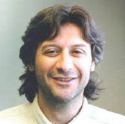
Alesio Fassano MD - U of Maryland - Contact here
Dr. Fasano's insistence that indeed celiac disease is here in the United States and his persistance in proving his case paid off for thousands of Americans suffering the consequences of undiagnosed gluten related ills. Dr. Fasano originally moved from Naples, Italy to Baltimore, Maryland in the early 1990's to research children's diarrheal diseases. That research led to discovery of zonulin, a tight junction regulator that influences permeability of various mucosal and tissue barriers including the gut and brain barriers. Building upon this discovery he is now involved in development of a drug (AT 1001) that may be useful in various autoimmune disorders such as celiac disease, rheumatoid arthritis and diabetes. Dr. Fasano recognizes that a large number of the patients he sees react to gluten.
Celiac Disease update, Dec 2008, by Dr. Fasano.
These few Celiac specialists worked hard to spread the word among their peers and treat a deluge of newly informed patients. Several of them identified celiac disease many years ahead of the 2003 research. These experts are mainly focused on celiac villi damage. Some have moved beyond to accept non celiac gluten syndrome. At this time most believe it is not autoimmune, and still recommend the tTG screener and villi or skin biopsy for dx of celiac disease.
They are all heroes and deserve our deep appreciation and respect.
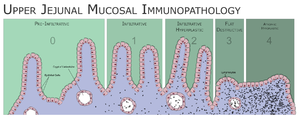
Dr. Michael N. Marsh, UK - Retired author of Celiac Disease: Methods and Protocols printed in 2000 (see sample pages on Amazon reader) . Dr. Marsh is respected as a giant in the field of the Gluten Syndrome, called "coeliac disease" when he practiced. In his day, all research was focused on villi damage and he designed the Marsh Classification System for Villi Damage, which is in current use today (see a recent challenge to this system). Dr. Marsh recently publicly admonished his followers to respect the non celiac gluten syndrome. His major work on stool testing, (originally this meant washing out the contents of a patient's entire intestinal system) was suspended unfinished and unvalidated when his research grant was discontinued. He took retirement, his research partner Anne Ferguson passed away, and the project came to a standstill. Later Dr. Ken Fine, Baylor University, TX., see below, took up where Dr. Marsh and Anne Ferguson left off, and developed a similar test. He developed a method which required collection of just one bowel movement, a much more practical procedure. Note: Dr. Marsh recently admonished his younger peers at the XII International Celiac Disease Symposium Conference held November 2006, to take the non celiac gluten syndrome seriously. His private response when shown a complete list of available testable antibodies: "this is exactly what we need." (That panel of antibodies returned a 77% positivity rate in Dr. Thomas O'Bryan's entire practice over 3-4 years. Over 350 patients were tested.)
Professor Anne Ferguson, BSc, MB, ChB, PhD (Glas), FRCPG, FRCP, FRCPE, FRCPath - Scotland
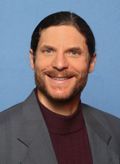
Dr. Kenneth Fine, MD Gastroenterologist Contact Dr. Fine
Dr. Fine, MD, is a respected gastroenterologist from Dallas, TX. Formerly associated with Baylor University, he is involved in announced but unpublished stool testing research and owns an independent lab for internet based, home collection gluten sensitivity stool tests.
Dr. Fine took up the research left unfinished by Dr. Michael N Marsh and Anne Ferguson (UK), originally in the study of microscopic colitis. He drew a connection between microscopic colitis and the gluten syndrome and eventually left Baylor and set up an independent accredited lab around 2000 to offer his stool test and a few other related tests directly to the public.
Dr. Fine is criticized for the high number of positives processed in his lab compared to celiac "villi focused" labs. However many patients find that his test matches their own experience. His results match findings by Dr. Thomas O'Bryan's practice and Dr. Vojdani's lab results. Dr. Fine also recognizes more genes than celiac focused specialists. Several very informative essays explaining his perspective are posted on his website www.enterolab.com .
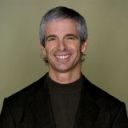
Dr. Thomas O'Bryan Contact here
Dr. O'Bryan is a functional medicine practitioner in Chicago area. His excellent research reviews on various aspects of the gluten syndrome are incredibly clear and well presented. Dr. O'Bryan works with Dr. Aristo Vojdani in research and test development. He has produced detailed testing protocols that produce impressive rates of positivity that match most patient's experience. (The secret? He tests as many gluten related antibodies as possible! Over 4 years he ran a detailed panel of gluten related antibodies (12-15 tests) on all patients in his practice with a 77% positivity rate. Many of those patients tested positive for antibodies other than gliadin and tTG and IgA, IgG, and IgMs were all checked for each antibody. He also ran cross reactive foods and a panel of antibodies to tissues known to be particularly susceptible to gluten damage. Dr. O'Bryan completed an outstanding and highly appreciated speaking circuit in the USA in 2008 in which he addressed 3000 medical doctors and practitioners on the wider scope of the gluten syndrome. His planned 2009 circuit focuses on food allergies in general. Often he speaks to patient support groups the evening before the main presentation to professionals. If he comes to your area BE SURE to arrange a special event for your group to hear these incredibly well presented and informative lectures. Watch for a post of his schedule soon.
Dr. O'Bryan's first research review "Unlocking the Mystery of Wheat and Gluten Intolerance" is available in DVD format here and here and here. His second research review for patients (3 hours) is due to be posted free on this website soon. Click here for his 90 minute audio talk, "I'm gluten free but I don't feel great" also on the home page of this website. All these talks are excellent resources on the gluten syndrome. (This website has no financial interest in products or services mentioned here.)
All Rights Reserved | The Gluten Syndrome


